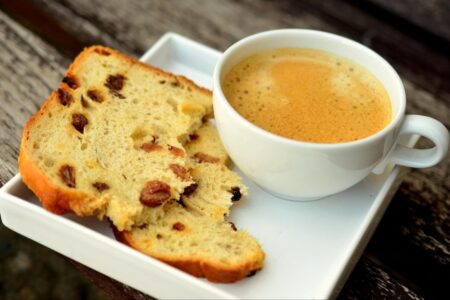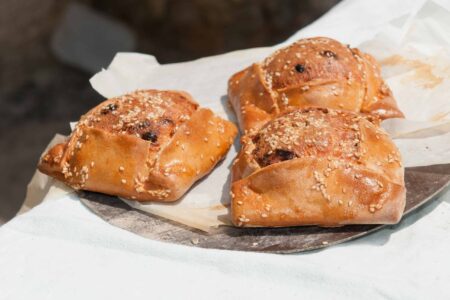The village of Lefkara is one of the most picturesque and unique places in Cyprus, located in the foothills of the Troodos Mountains, approximately 40 kilometers west of Larnaca and 35 kilometers northeast of Limassol. This place is called a living open-air museum: narrow cobbled streets, stone houses, vineyards, craft shops, and the fragrant mountain air create the unique atmosphere of ancient Cyprus.
Lefkara is famous for its lefkaritika lace and silverware – crafts that have made the village famous far beyond the island and earned it a place on the UNESCO Intangible Cultural Heritage List.

Contents
Historical overview
Lefkara’s history goes back centuries. The first mentions of the settlement appear in Byzantine sources from the 11th century. At that time, the village was located in an area renowned for its abundant fertile land and fresh water springs. During the Lusignan and Venetian periods, Lefkara became a center of crafts and trade.
In the 16th century, local artisans created a unique style of embroidery—a lace craft distinguished by its geometric patterns, precision, and use of white and cream threads. According to legend, it was in Lefkara that the great artist Leonardo da Vinci purchased a lace tablecloth for the altar of the Milan Duomo during his visit to Cyprus in 1481. Since then, “lefkaritika” has become famous throughout Europe.
Geography and architecture
The village is divided into two parts— Pano Lefkara (Upper) and Kato Lefkara (Lower). Both are connected by a network of narrow streets lined with stone houses with red-tiled roofs and wooden shutters. Lefkara’s architecture has retained the typical features of Cypriot mountain architecture—massive limestone walls, courtyards lined with orange trees, and traditional balconies.

The village is approximately 600 meters above sea level. Picturesque views of the valley with olive and almond groves open up from the village, and on clear days, Larnaca Bay can be seen. Thanks to the moderate climate, summers here are a few degrees cooler than on the coast, making Lefkara a popular holiday destination during the hot months.
What is Lefkara famous for ?
The village’s greatest treasure is its famous Lefkara lace. This traditional hand-embroidered technique combines geometric patterns, openwork elements, and white thread on a linen or cotton base. Each pattern is created by hand, without machines, and requires weeks, sometimes even months, of work.
Craft secrets are passed down from generation to generation. Lefkara women sit at the door of their homes or in their workshops, embroidering intricate designs that symbolize harmony and hard work. Each design has its own name: “verviki,” “koppella,” “spartila,” and others.
In 2009, Lefkara lace was inscribed on the UNESCO Representative List of the Intangible Cultural Heritage of Humanity. This status acknowledged the exceptional cultural value of this craft and its contribution to the preservation of Cyprus’s national identity.
Besides lace, Lefkara is famous for its jewelry and silversmithing. Local artisans create jewelry, iconostases, crosses, and miniature objects from the finest silver filigree. This art form originated here during the Venetian period and is still practiced today.
Workshops and stalls selling their wares can be found on almost every street. Many artisans conduct demonstrations right in front of visitors, demonstrating the process of fusing, spinning, and weaving silver threads.

Lefkara Attractions
Despite its small size, the village is rich in historical and cultural sites.
- The Church of the Holy Cross (Timios Stavros) is the main church of Lefkara, built in the 15th century. It houses an ancient wooden cross with a fragment of the Holy Tree, decorated with carvings and silver.
- The Museum of Traditional Crafts and Folklore is housed in an old house and tells the story of Cypriot life and the technology of lace and jewelry production.
- The Lefkaritika Museum is small but informative, with a collection of rare examples of hand embroidery and antique tools.
- Viewpoints – at the top of the village, panoramic views of the valley and the Troodos Mountains open up.
Atmosphere and lifestyle
Lefkara retains the authentic character of a Cypriot village. There are no noisy hotels or clubs, but there is peace, fresh air, and friendly locals. In the evening, the streets are filled with the scent of jasmine and the ringing of bells.
The main square is lined with cozy cafes and taverns serving traditional dishes like halloumi, kebab, dolma, and almond sweets. Many tourists choose to spend the night here to soak up the tranquility of the mountains and see the village come to life at dawn.

Festivals and cultural events
Lace and Silver Festival takes place annually. For several days, the streets fill with music, exhibitions, and workshops. Local artisans demonstrate their creation process, and visitors can purchase unique souvenirs.
In addition, in the summer, folklore evenings are often held here, featuring Cypriot music and folk dancing.
What to see nearby
There are other interesting places near Lefkara:
- The Monastery of Saint George Alamanou, founded in the 4th century, is one of the oldest on the island;
- The village of Tochni with beautiful stone architecture;
- Khirokitia Archaeological Park, a UNESCO World Heritage Site, where you can see the remains of a Neolithic settlement.
Also nearby are hiking trails leading to the mountains and wine-growing villages, where you can sample local wines and traditional sweets such as lokum and souzoukos.
Useful information
Lefkara is easily reached by car via the A5 or A1 highway, following the signs for Lefkara. The drive from Larnaca takes about 40 minutes, and from Limassol, just over half an hour. Public transportation is infrequent, so renting a car is recommended for independent travel.
The village has several guesthouses and boutique hotels, such as Lefkara Hotel & Restaurant, RedBlue Door, and Archontiko Dimitriou. They combine traditional architecture with modern comfort.
Lefkara is a place where you can experience the authentic Cyprus, without the glitz and bustle. Here, crafts are preserved in their original form, and an atmosphere of respect for tradition reigns. A stroll through its streets is like a journey through time: every stone and every house tells a story of craftsmanship, patience, and beauty.

















